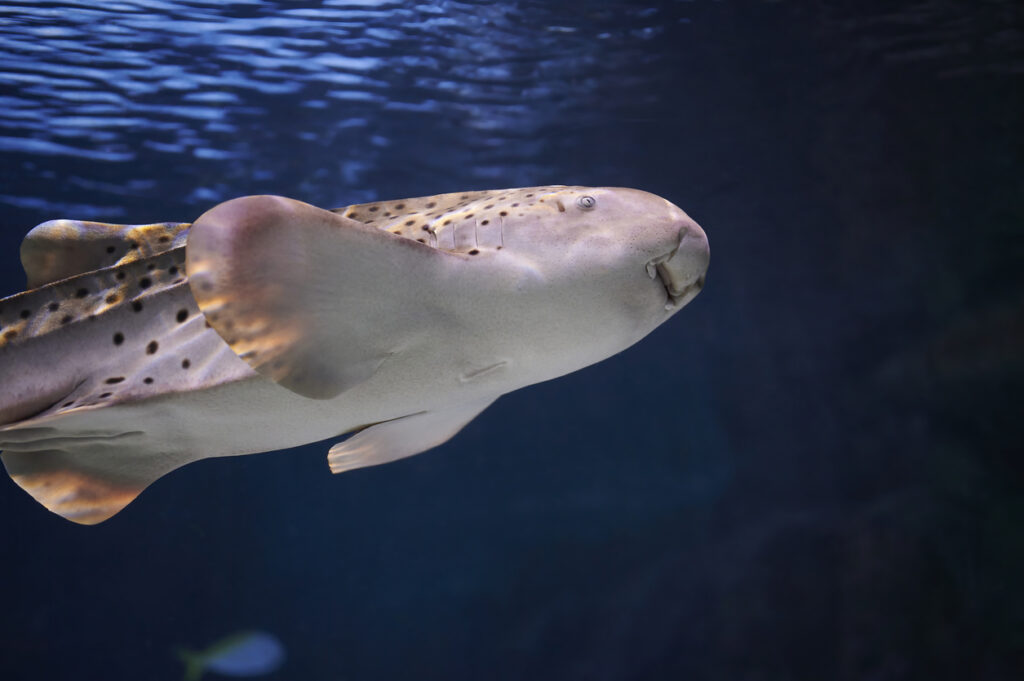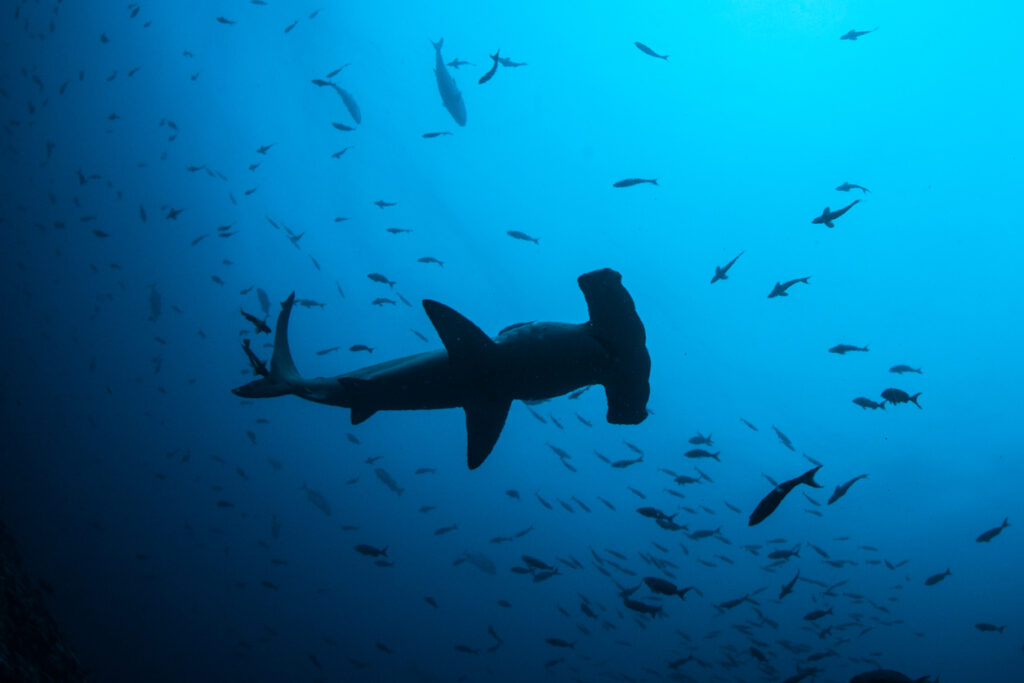Sharks are one of the Earth’s most ancient creatures – they were on this Earth before trees even existed. They’ve evolved over the last 450 million years, surviving major extinction events, including the famous asteroid strike that killed the dinosaurs.
There are over 500 species of sharks in our oceans. Split into 8 different groups each with their own behaviours and features. What they all have in common, is that they are cartilaginous fish, which means their skeleton is made from cartilage instead of bone. With so many different sharks to learn about, we’ve picked out some of the most weird and wonderful species to give you a truly unique insight into these awe-inspiring creatures.
Sharks come in all shapes and sizes
When you think of a shark, you likely conjure up a picture of a great white shark, but the truth is that sharks are all different. While it’s true that some whale sharks can grow up to 55ft (almost 17 metres), there are also tiny dwarf lantern sharks that would fit in the palm of your hand.
They live in both deep and shallow waters across the world’s oceans, scientists are still trying to understand how long they live. However, we do know the Greenland shark is capable of living up to 272 years, making it Earth’s longest living vertebrate.
So, you think you know what a shark looks like? Let’s test your knowledge and introduce you to some of the weirdest but wonderful sharks that you should get to know!
Zebra shark

Zebra sharks (Stegostoma tigrinum) aren’t just distinctive, they’re also one of the easiest-going shark species out there! While adult zebra sharks are typically covered in leopard-like spots, they get their name from their juvenile state. Juvenile zebra sharks are a dark brown-black with white stripes, that look just like a zebra. This provides the young sharks with a perfect defence as the stripes look very similar to venomous sea snakes. Fully grown, zebra sharks can measure up to 9ft (2.7m).
This particular species are docile, nocturnal creatures and are typically found in the shallower reefs across the Indo-Pacific region. Unlike some other species, the zebra shark doesn’t have to keep swimming in order to breathe. This means it often spends time resting on the seabed.
Zebra sharks typically eat molluscs and crustaceans, although they will eat some small fish too. They have flexible bodies to squeeze into crevices to find their next meal, and strong, flat teeth to break through the shells.
One of the most fascinating facts about a zebra shark is its ability to experience virgin births. This is where unfertilised eggs develop into embryos, without any help from the male! This is known to happen in other vertebrate species, but it’s rare in more complex animals like sharks.
Frilled shark
The frilled shark (Chlamydoselachus anguineus) looks like something from the time of the dinosaurs, and can easily be mistaken for eels. They get their name from the red frilly edges on its gills. They are a naturally rare species, spending most of its time in the deeper waters far below the surface.
Frilled sharks have clusters of 300 teeth that sit in rows along the jaw, allowing them to bite through squid tentacles, which is their typical meal of choice. Possibly one of the most mysterious species of shark. The frilled shark isn’t thought to be a strong swimmer or have a particularly strong bite and many experts are baffled as to how it has survived for so many years!
They are spread out in different areas of the world, living off the coasts of Japan as well as New Zealand and Tasmania.
Goblin shark
The goblin shark (Mitsukurina owstoni) is very unusual in its appearance, but it’s still an incredibly fascinating species. It is the only surviving member of its family, which gives it the status of a living fossil! Goblin sharks get their name from the mythical goblins that typically appear in Japanese folklore.
Goblin sharks typically live on the bottom of the ocean along a continent’s edge, and can grow up to 12ft long. They have a pinkish colour, but their most distinct physical feature is its long, prominent snout. However, it’s how they capture their prey that is probably the most incredible fact about these animals. Goblin sharks can thrust their jaws out of their mouths a further 3 inches, giving them a unique way of catching their prey!
The goblin shark has been roaming the oceans largely unchanged in its appearance for over 100 million years.
Hammerhead sharks

You will likely already be familiar with the hammerhead shark, but they certainly deserve a place on our list of weird but wonderful sharks! The hammerhead shark (Sphyrnidae) has incredibly wide-set eyes, giving them a mallet or hammer-shaped head. However strange it may look, it means that hammerhead sharks have a much bigger visual range than most other shark species.
What’s more, the hammerhead shark’s wider head means it can spread its sensory organs further, meaning they have increased sensitivity when it comes to hunting for their prey. Their favourite meal of choice is a stingray! They can grow up to 20ft, and are typically found in both temperate and tropical waters across the world. Hammerhead sharks are known to migrate in the summer to seek cooler water.
Cookie cutter sharks
Cookie cutter sharks (Isistius brasiliensis) are the smallest on our list, growing up to around 20 inches. It’s also probably the one that scientists know the least about. It has been spotted in many areas of the world, mostly in tropical to temperate waters.
Shaped like a cigar, the cookie cutter shark lives most of its life in the deeper parts of the water. It doesn’t look like your typical shark – and it doesn’t act like one either! One of the most fascinating features of a cookie cutter shark is its feeding method. This species has a round mouth, with suctorial lips and sharp triangular teeth. They feed off larger animals by suctioning to the side of larger animals and spinning to remove a round chunk of flesh, as if you were using a cookie cutter! With that in mind, the cookie cutter shark is classed as a parasite, as it feeds off animals without killing them.
We bet you didn’t know half of those sharks even existed! The ocean really is a strange place that’s always teaching us new things. Why not come and see our zebra sharks for yourself, as well as a whole host of other fascinating creatures? Check out our visitor info for opening times, tickets and more!
